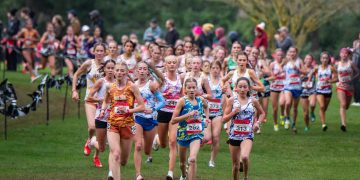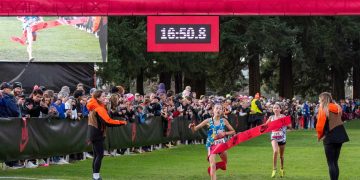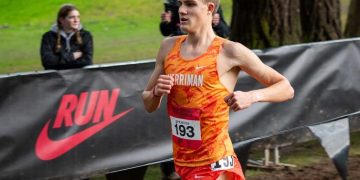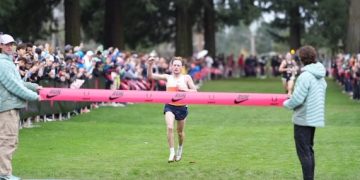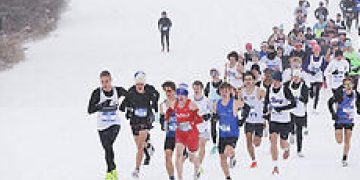There are two para-athletics events that always amaze me. In writing that I want to avoid sounding patronizing or making para-athletics sound like a freak show. The first event is the T12 long jump
Oksana Zubkovska won the Paralympic title with a leap of 5.78m. She stands at the start of her run up, composes herself, and sets off at full speed down the runway before taking off and jumping into the sand, landing over five meters away. Oh, there is one small detail that I forgot to mention. Oksana is totally blind. Imagine the courage it must take to launch yourself without being able to see where you’re going – talk about a leap in the dark! Someone lines her up and tells her when it is safe to go. A coach or assistant typically stands behind the sandpit shouting so that she can direct herself towards the sound. That helps. But it still requires courage to execute. It can go badly wrong. I recall once seeing a blind long jumper lose the direction, veer to the side and literally take out the no-jump judge as he sat on his chair!
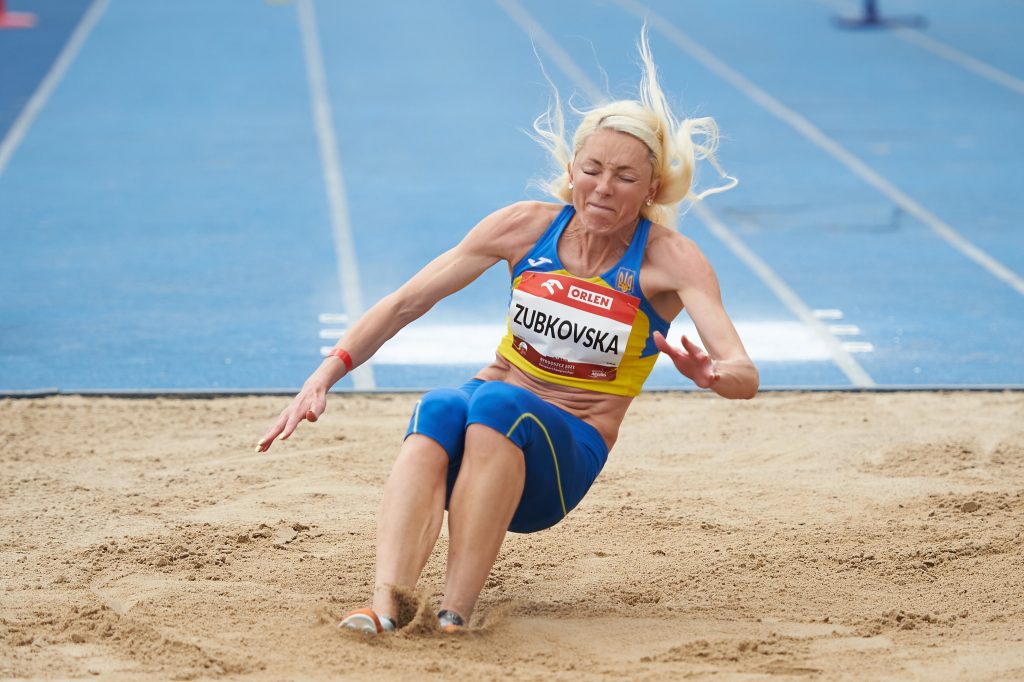
These illustrate the process. Yes, Oksana, can jump five meters because she trains hard and practices a lot – like any long jumper. But there is also an admirable determination and courage that is not required of the sighted long jumper.
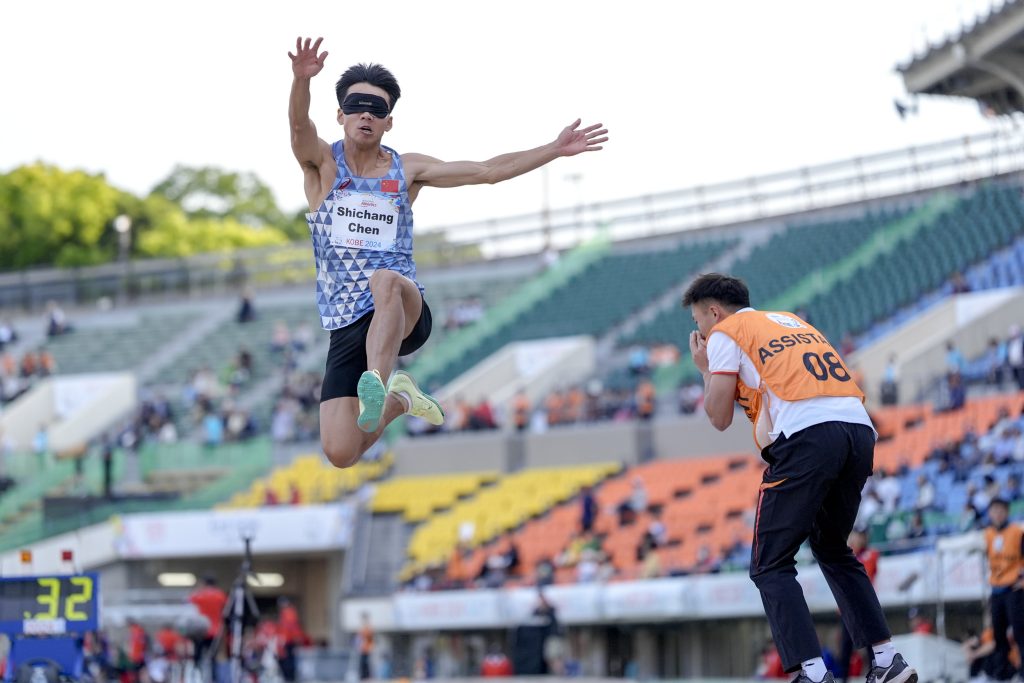
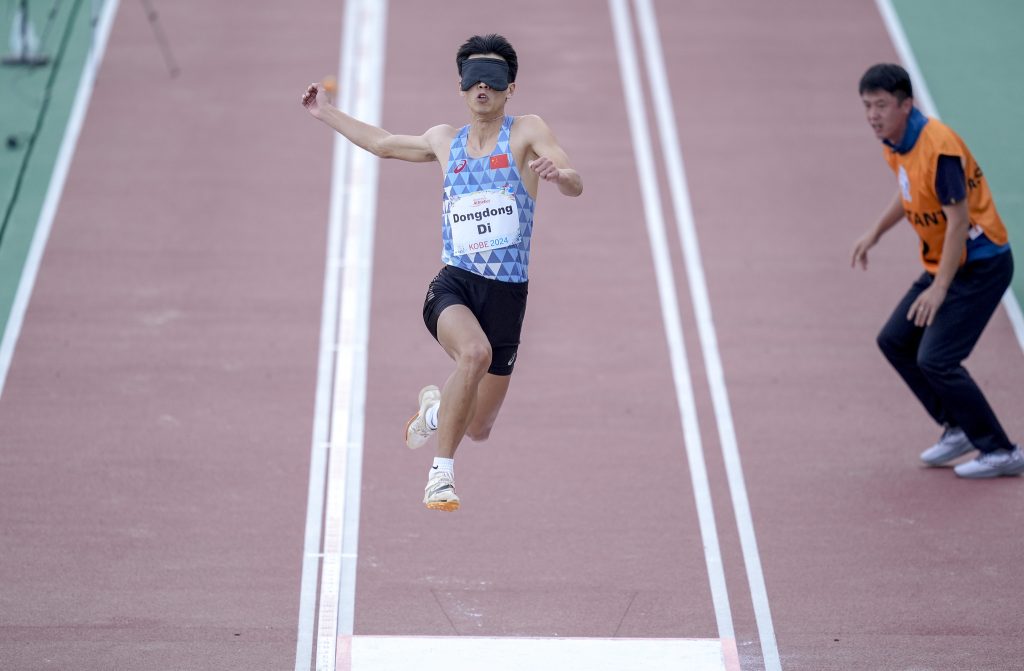

Ezra Frech won the T63 high jump in Paris with a jump of 1.94. Someone once wrote: “We should not ask why the one-legged man decided to try the high jump; we should just be glad that he did”. The T63 high jump is arguably the most compelling event in the para athletics program. The definition of T63 is: “Athletes with single through knee or above knee limb deficiency competing with a prosthesis where minimum impairment criteria for lower limb deficiency are met”. But that competition also includes T42 “Athletes have one or more impairment types affecting hip and/or knee function in one or both limbs and with activity limitations in throws, jumps and running competing without prosthesis/prostheses comparable to that of an athlete with at least a single through or above knee amputation. Athletes with impairment(s) roughly comparable to bilateral above knee amputations are also placed in this class”.
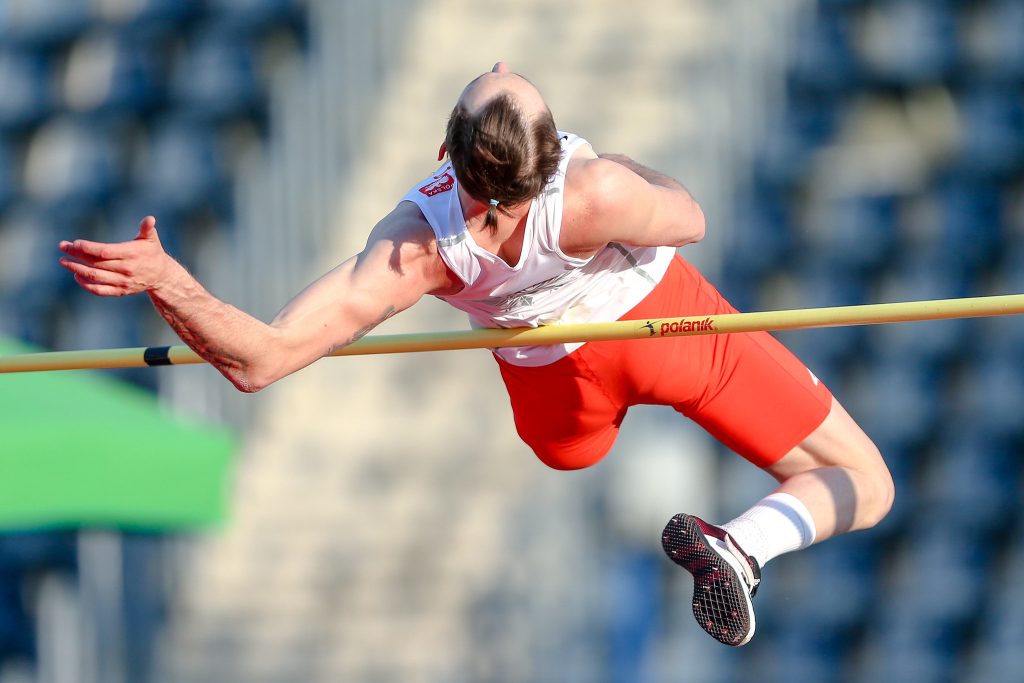
A previous world champion, Sam Crewe, once explained to me ”There are four or five different styles of jumping because it so versatile and everyone has their own challenges and issues. So, everyone adapts to what they’re good at and works on what they struggle with. What attracted me was knowing that if something isn’t working, I can always change it. And I think people are just fascinated by the amputee high jump, seeing the running blades in action or people just hopping over but jumping effectively over a height as high as most people’s head. It just relates to everyone as inspiring”.
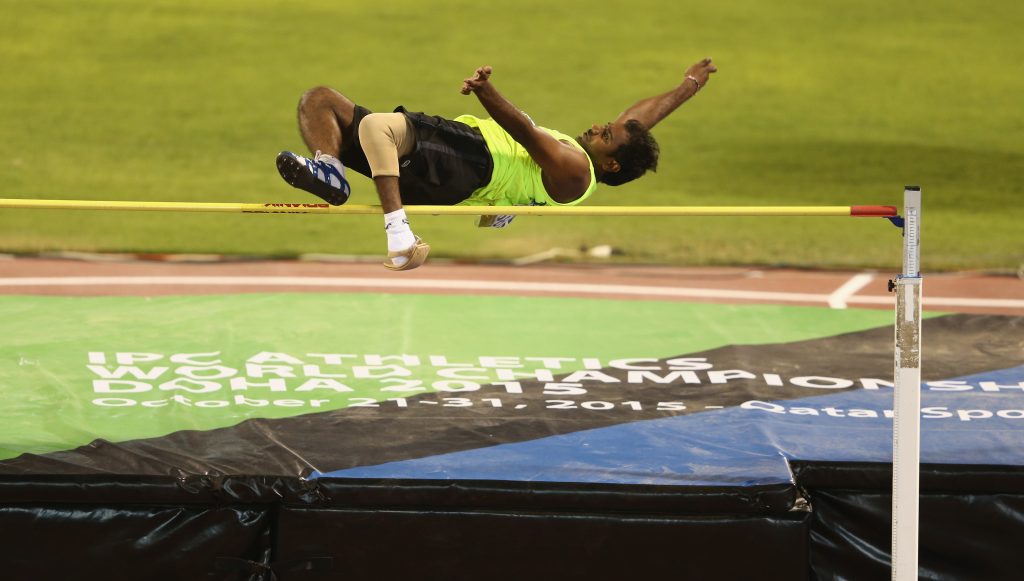
Silver medallist, Kumar, enthused: “The on- legged high jump is the best experience to do – or watch. If you haven’t seen it you need to catch up. For a person with one leg to be jumping nearly two meters is defying the human body and yet we only have a handful of people watching us, just our own people. I think people need to be educated more and if they call themselves educated, they need to learn more”. Explaining his background, he said: “I started training when I was seven years old and have been doing high jump for 15 years. I started in a boarding school. In the school, sport and education went hand in hand. If you were not good at both of them you left the school! I also played cricket and table tennis. At boarding school you do a lot of sport you are jacks of all trades and may be master of one”.
While Crewe referred to the four or five different styles of jumping, Kumar has only used one: “I’ve never tried without my blade on because I wasn’t coached that way. I’ve always trained with athletes with two legs. I’m on the university track team and I am coached the same as any of those athletes. It works for me so I’ve never considered changing it but if it hadn’t worked for me it would have chosen a different way”. Kumar agreed: “When you start with one style you tend to carry on with it because that’s how you start eroding your fears. We all have certain restrictions and have to do what our body allows”.
I would have loved to have spoken to every athlete in the event to understand more of this amazing discipline. It is a compelling spectacle, an event with combined great skill and raw courage. It is the essence of para athletics.
https://x.com/i/status/1831410510082011436 para HJ
Para LJ, three pictures of Zhou and Asila Mirzayorova (Uzbekistan)
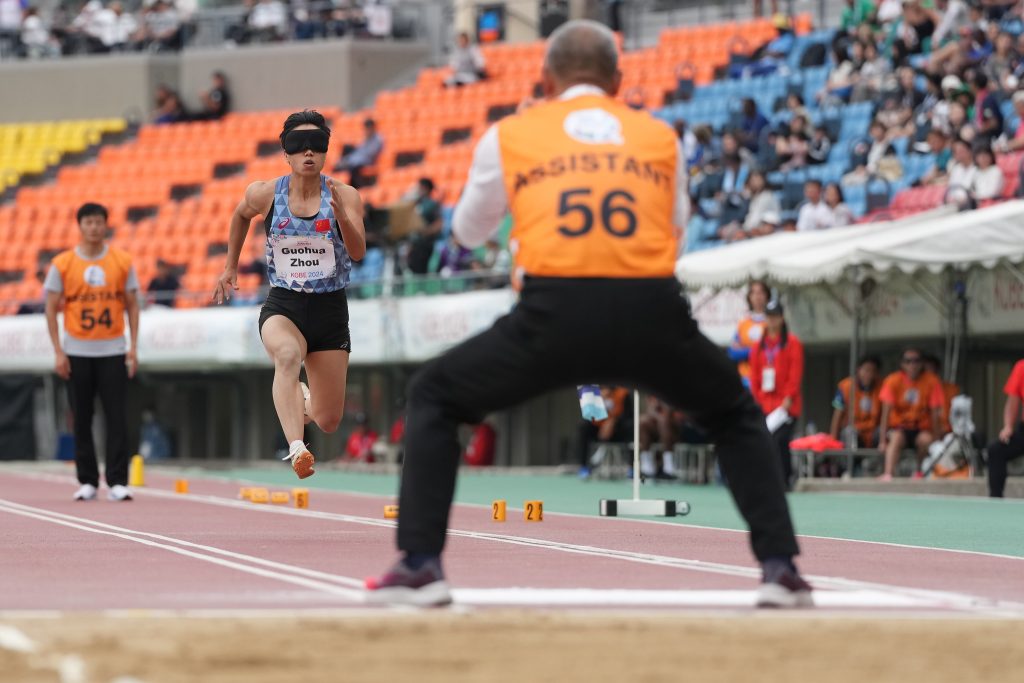
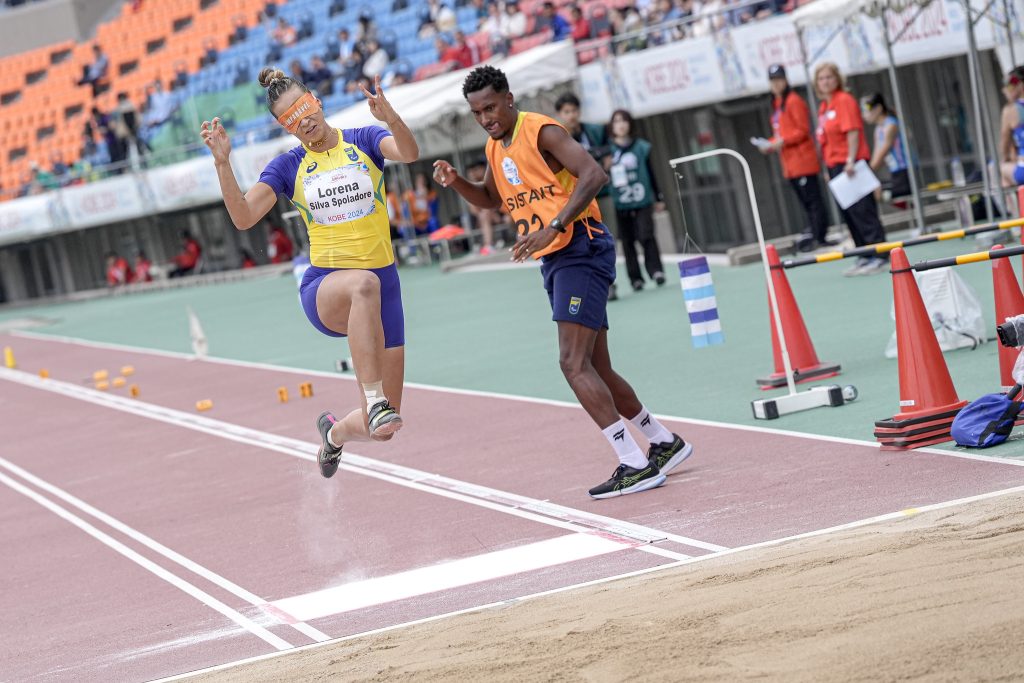
Author
-

Since 2015, Stuart Weir has written for RunBlogRun. He attends about 20 events a year including all most global championships and Diamond Leagues. He enjoys finding the quirky and obscure story.
View all posts




